The VX3219-PC-MHD is one of the latest 32″ curved gaming monitors released by ViewSonic this year. At a glance, it looks like your typical 32″ curved display yet it comes with a blazing fast 240Hz refresh rate – a standout feature among its peers.
Other than those specifications, it is worthy to note that this one is a VA Panel with a 1500R curvature and a resolution of 1920 x 1080. It also comes with a 1ms MPRT along with adaptive sync support. At 20,999 Pesos MSRP, this borders at the edge of feasible Full HD display options – personally speaking. You could get this at ₱ 18, 990 PHP at some retailers though.
Disclosure: ViewSonic sent the VX3219-PC-MHD for the purpose of this review. The company did not ask me to say anything particular about it.
- Product Page: VX3219-PC-MHD 32” 240Hz Curved Gaming Monitor
- Price: ₱ 18,990 PHP (RP, DynaQuest)
- Release Date: Q4 2021
Table of Contents:
- 1 Technical Specifications
- 2 Packaging and Accessories
- 3 Design, Build and Connectivity
- 4 OSD and Navigation
- 5 Ergonomics
- 6 Test Setup and Methodology
- 7 Preset Analysis:
- 8 Color Gamut
- 9 Tone Response
- 10 Brightness and Contrast
- 11 Screen Uniformity
- 12 Color Accuracy
- 13 Calibration
- 14 Display/Input Lag
- 15 Motion Clarity/Blur
- 16 Power Consumption
- 17 Software, Lighting and Special Features
- 18 Final Thoughts
Technical Specifications
| Display | |
|---|---|
| Panel Size | 31.5″ |
| Aspect Ratio | 16:9 |
| Resolution | 1920×1080 |
| Refresh Rate | 240Hz |
| Adaptive Sync | AMD FreeSync |
| Pixel Density | 70PPI |
| Brightness | 300cd/㎡ (typical) |
| Contrast Ratio | 4000:1 (typical) |
| Panel Type | VA |
| Response Time | 1ms (MPRT) |
| Color Space | NTSC 72%, sRGB 103% |
| Color Depth | — |
| Backlight | W-LED |
| Connectivity | |
| Display Options | 1x DisplayPort 1.4, 2x HDMI 2.0 |
| USB | — |
| Audio | 1x 3.5mm (out) |
| Ergonomics | |
| VESA Mount | 100x100mm |
| Pivot | — |
| Swivel | — |
| Tilt | -5°/+20° |
| Lift | — |
| Anti-strain | Blue Light Filter |
| Dimensions | |
| Length | 709mm |
| Width | 93mm |
| Height | 419mm |
| Weight | 4.2kg (without stand) |
Packaging and Accessories
ViewSonic packed the VX3219-PC-MHD in a large yet slim packaging. It is surprisingly light at 7 kilograms which is one of the lightest monitor packaging relative to its size I’ve carried this year round. I also appreciated ViewSonic cutting off polystyrene foam usage (maybe also due to its lightness) and with that comes an even easier unpacking experience. No need to slide everything out.
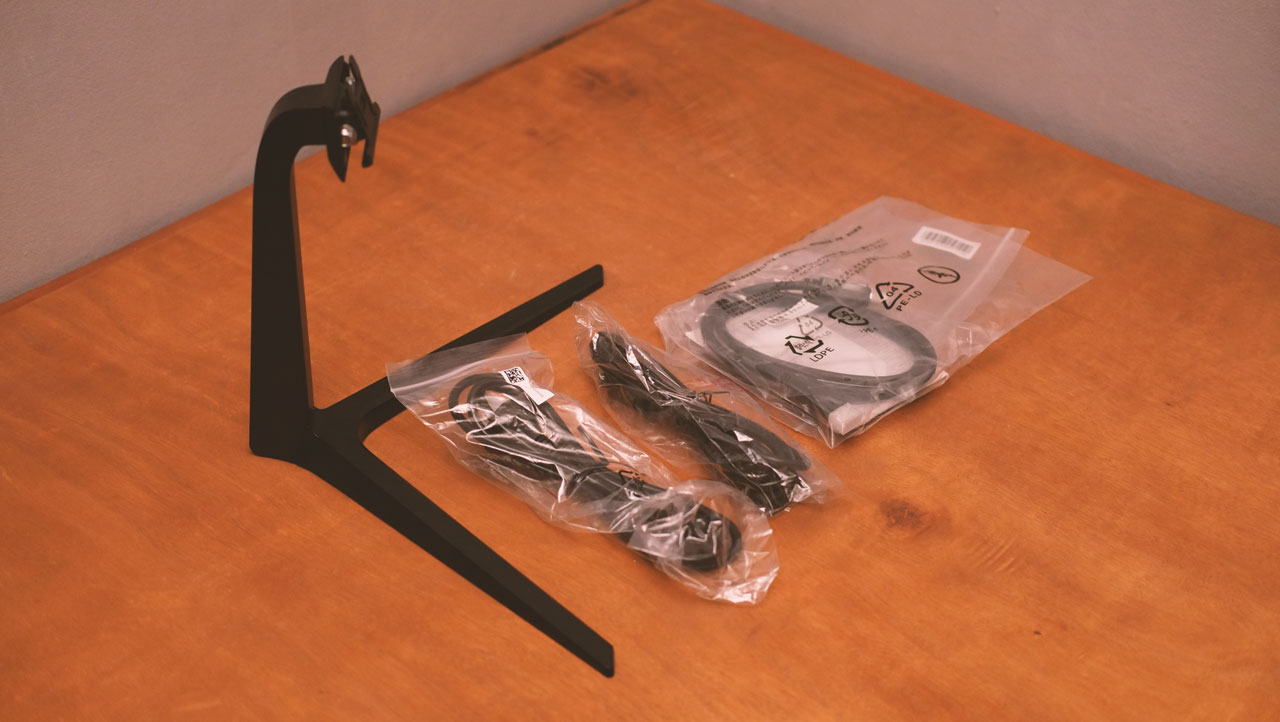
The packaging comes with the following items inside:
- ViewSonic VX3219-PC-MHD
- Stand
- DC power adapter
- US IEC Power cable
- UK IEC Power cable
-
DisplayPort cable
- Manual
- Warranty card
- 4x VESA mounting screws
- 4x VESA mounting spacers
Good bundle of accessories we got here.
Design, Build and Connectivity
The ViewSonic VX3219 is a sleek looking 32″ gaming monitor with its all black borderless design. A nice contrast over the majority of gaming displays with edginess written all over them.
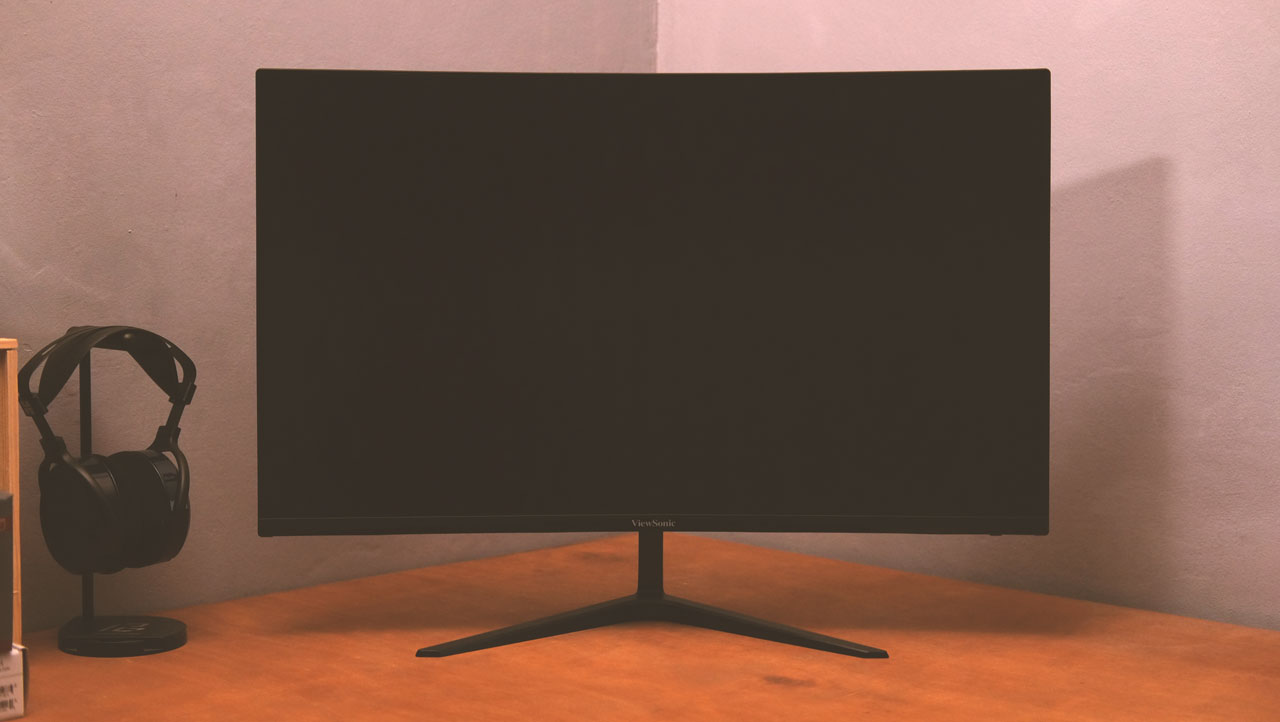
Welp, I said that too early – the back panel still got that edgy design I’ve been talking about. Not that bad though and you won’t see it much anyway unless you’re on an office-like open environment.
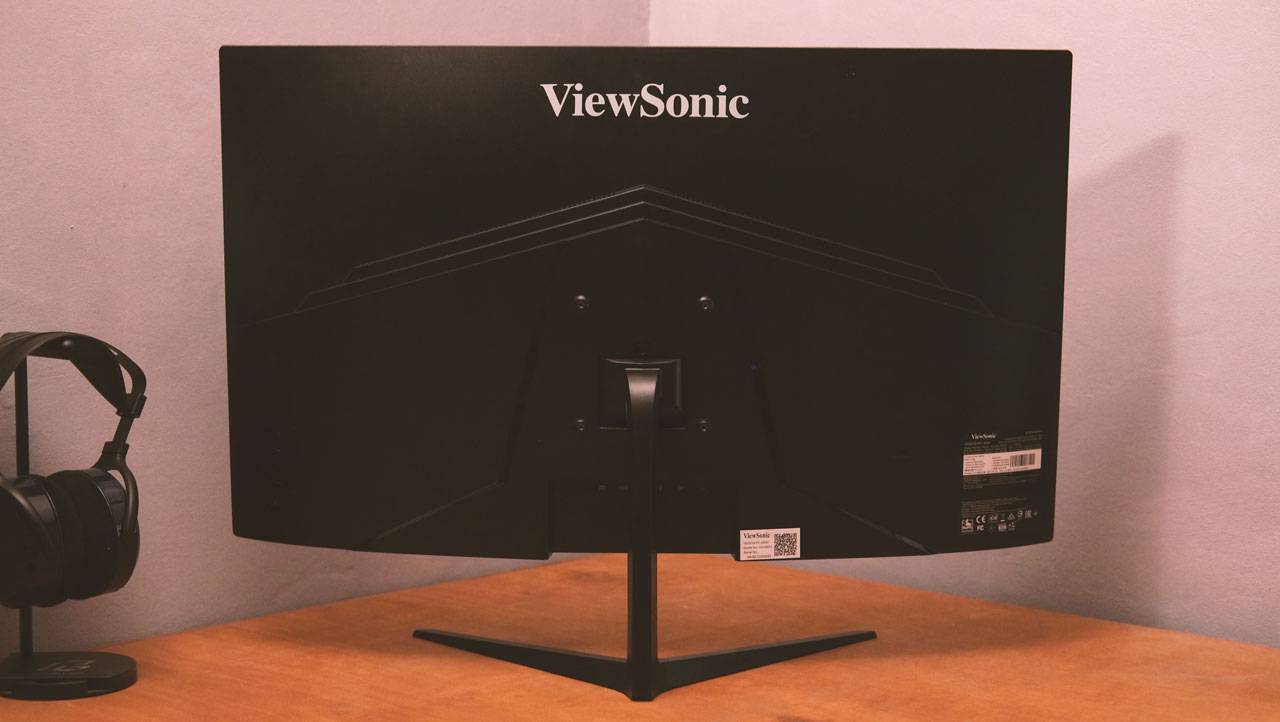
Connectivity options are tucked away at the bottom with legends to aid visibility. We have the DC power port here, the dual HDMI 2.0 ports and the DisplayPort. A 3.5mm audio jack (out) is also located here just in case you want more oomph over the bottom firing 2W stereo speakers. I wouldn’t use both by the way – unless I have no choice. More about this later.
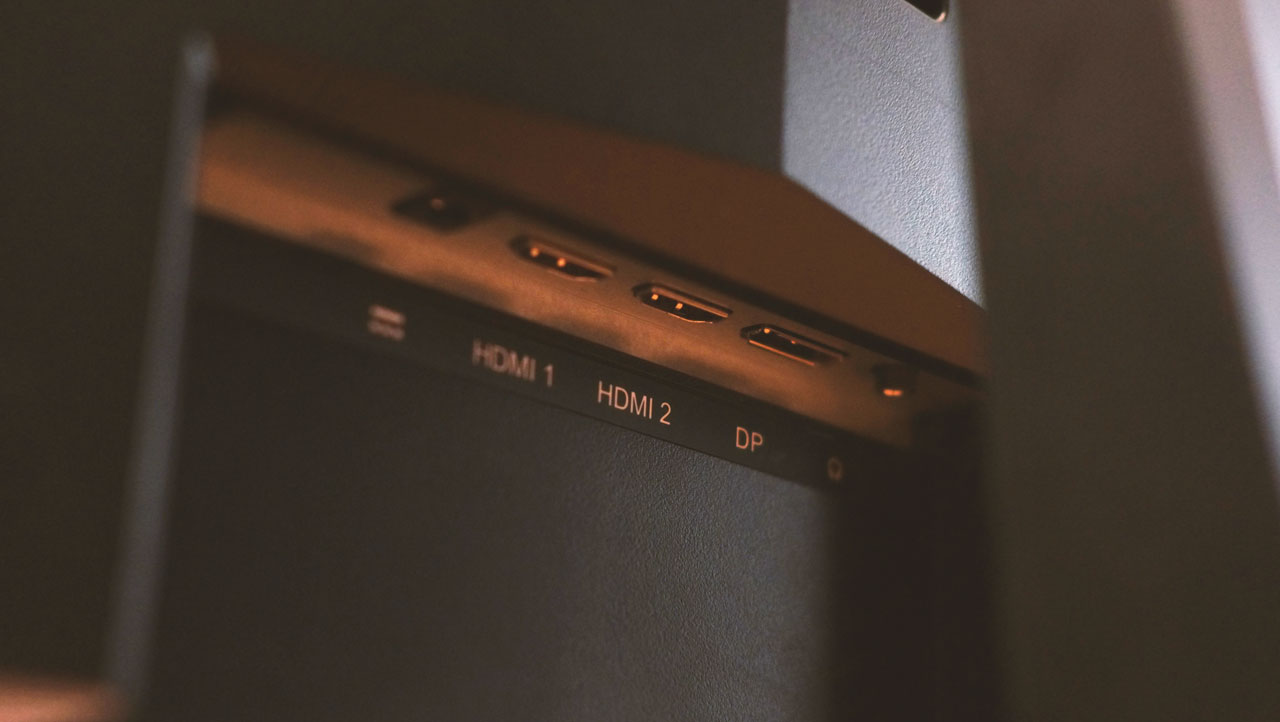
Power is external – love it or hate it. We have proper support for 100mm VESA mounts though.
ViewSonic went with the tried and tested rear button approach to when it comes to the VX3219’s navigation. No legends here though so the company decided to have them displayed along with the OSD. This setup is not my favorite but I’m glad they went with the universal language of arranging the favorites and power button at the extreme ends of the single row configuration.

Now the OSD itself comes with tons of sub menus but there are only few that we want to check out here. First out is the View Mode. This is where you could select the built-in profiles.
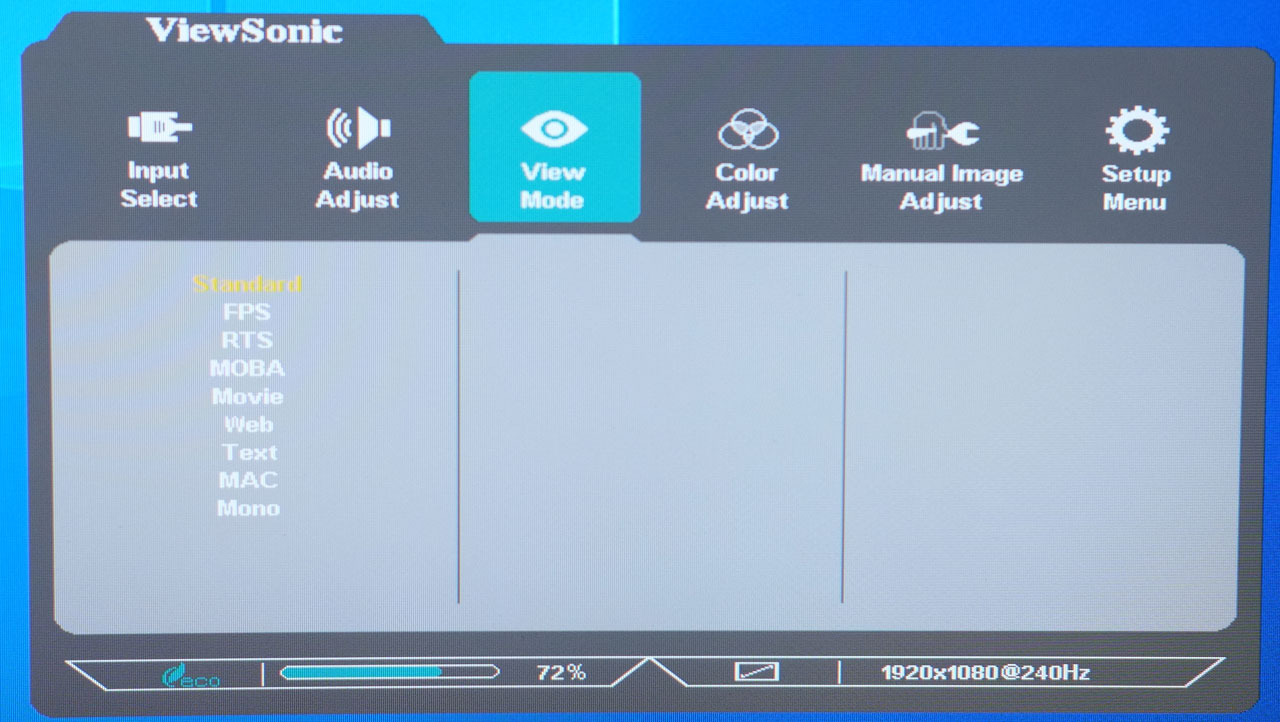
Color Adjust is where the brightness, contrast, temperature, color space and range are located. Some of these settings will get disabled depending on the profiles selected. We do not have Kelvin based color temperature options here so keep that in mind.
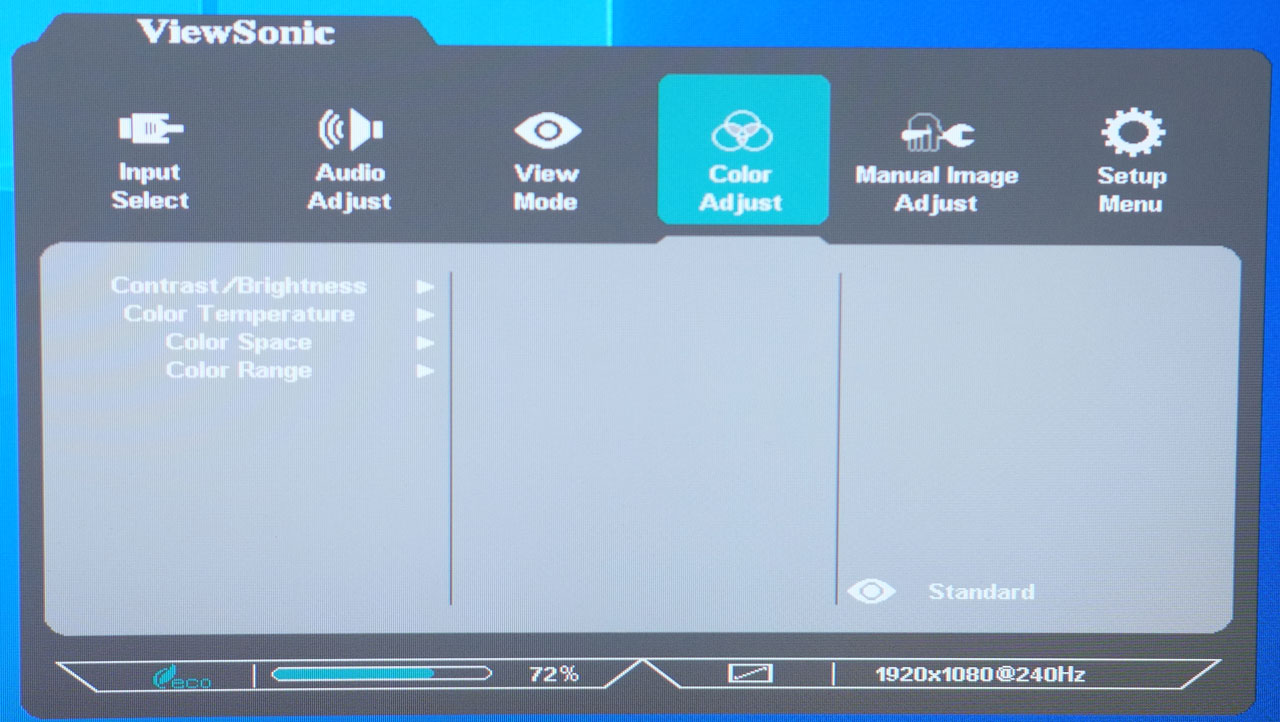
Manual Image Adjust is where the bulk of advanced settings are located. That includes Black Stabilization which is a major contributor to the gamma levels. This defaults to 50% which is gamma 2.0 according to my measurements. Response Time is also located here with 3 options to choose from.
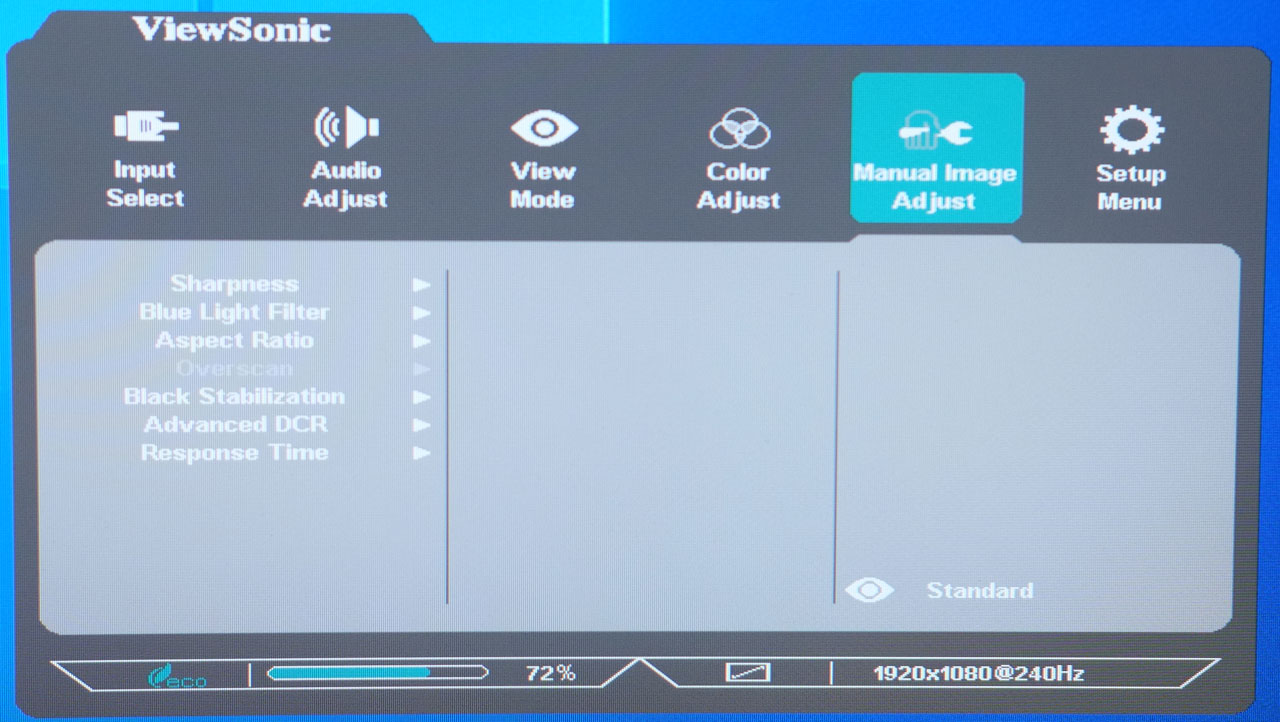
Finally we get to see the Setup Menu. This is yet another advanced menu but with more gaming oriented options. That includes Adaptive-Sync and the MPRT mode.
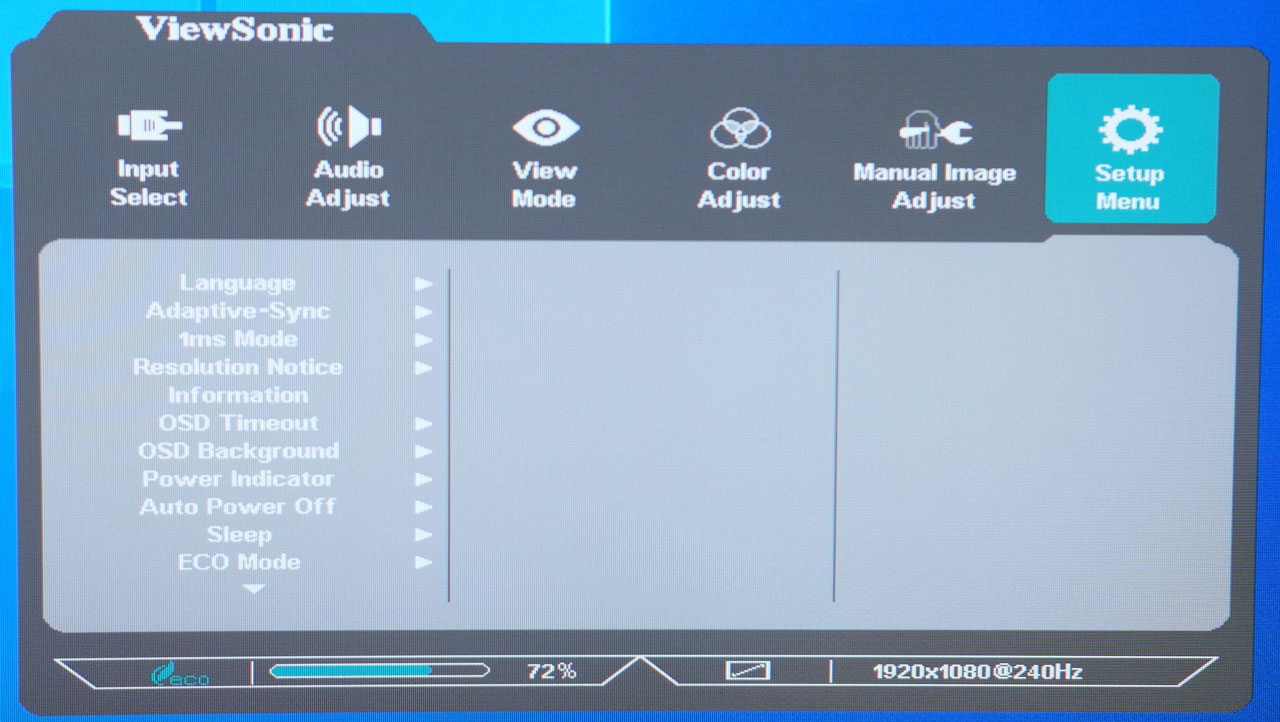
OSD and navigation is for the most part is decent. A joystick and a more organized selection of menus would be better though.
Ergonomics
The ViewSonic VX3219-PC-MHD is a 32″ 1080P display, which puts it at a borderline decent PPI level of 70PPI. My desk for an instance is about 30″ deep and I had a hard time using this monitor (like many 32″ displays before it) at that level. Personally, I think this monitor is best suited for deeper desks or in a living room environment. Still, if you prefer such a setup then I have no reason to object.

Actual ergonomics are decent at best. We only get -5°/+20° of tilt – a courtesy of its easy to assemble stand. ViewSonic knew that this is going to be an issue for power users so they decided to add a 100x100mm VESA mounting option complete with spacers and screws.
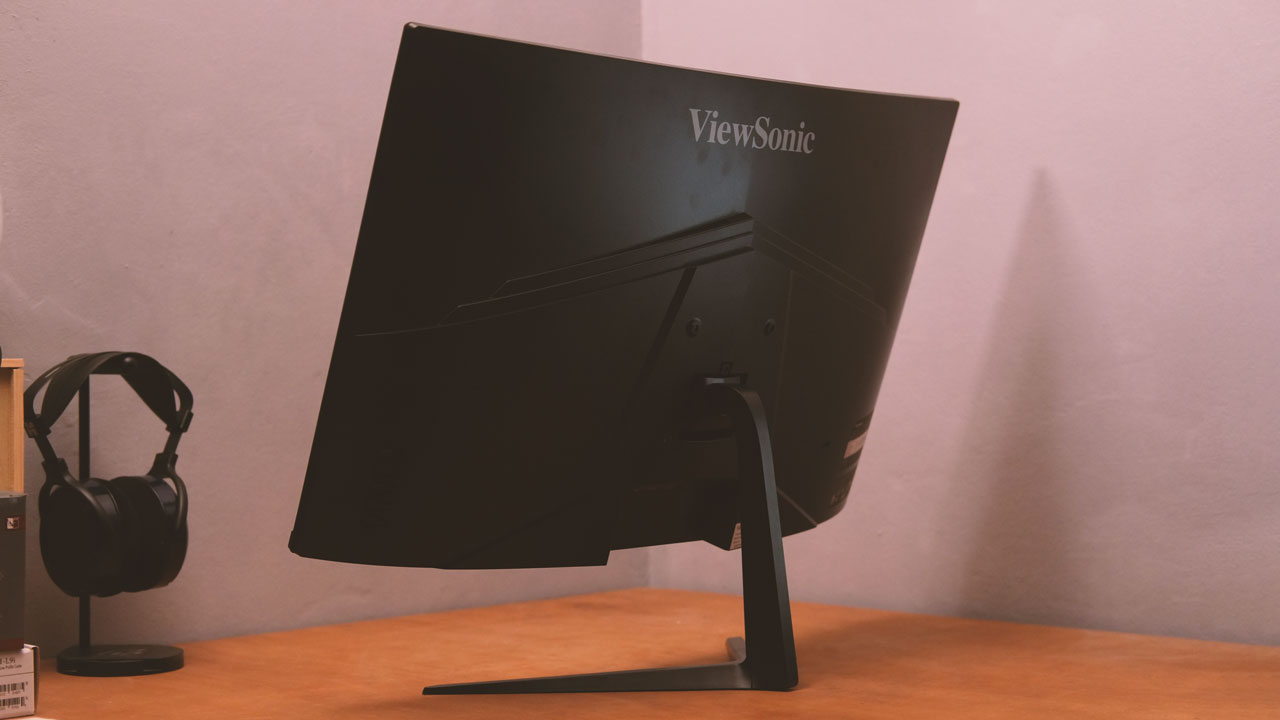
Now I’m a sucker for thermals so I also tested how the monitor handles emissions. I’m happy to report that it only gets to 35.8ºC so it’s not the in your face parabolic soft light that I’m expecting.
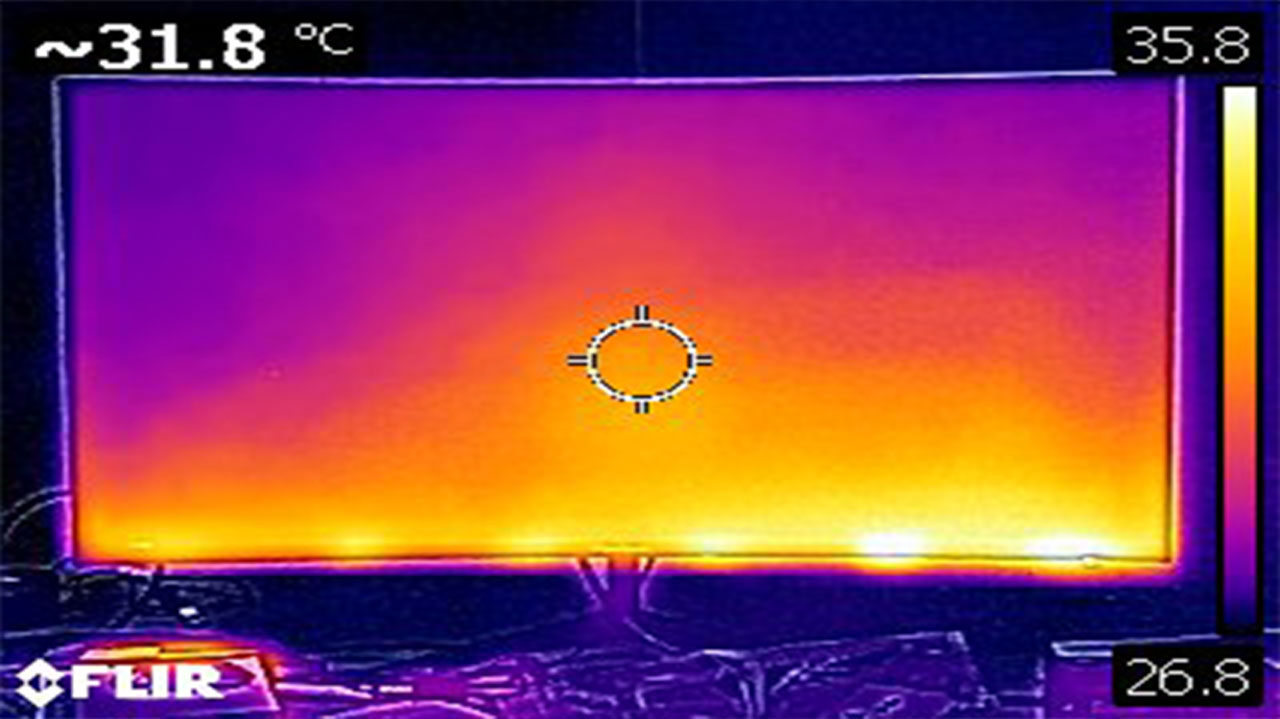
Aside from these ergonomic features, the monitor also comes with a blue light filter and a reading mode. The added benefit of the 1500R curvature for a tighter FOV also comes into play.
Test Setup and Methodology
Our test setup relies on the measurements taken from the Data Color Spyder5ELITE display calibration system and Time Sleuth latency testing device. It is important to note that we are testing the review sample after burn-in, with at least 24-hours of uptime. This is done so to negate the FOTB (fresh out the box) state of the DUT (device under test), yielding better benchmarking consistency.
| Test Setup | |
|---|---|
| Display Chain | PC > Nvidia RTX 2060 > Monitor |
| Measurement Tools | DataColor Spyder5 Elite, Time Sleuth |
| Resolution and Color Depth | Native (excluding Time Sleuth) |
| Software | DataColor Spyder5 Elite 5.5, AIDA64 Extreme, Google Chrome (TestUFO) |
Measurements obtained from a display panel will vary with operating temperature and ambient room light to name a few. In our case, we test monitors at an ambient room light level of 150cd/m2 with a brightness level of 120cd/m2.
Preset Analysis:
To start, the monitor is tested to check out the brightness, contrast and white point at different presets. This is to check what could be the nearest to our target for calibration.
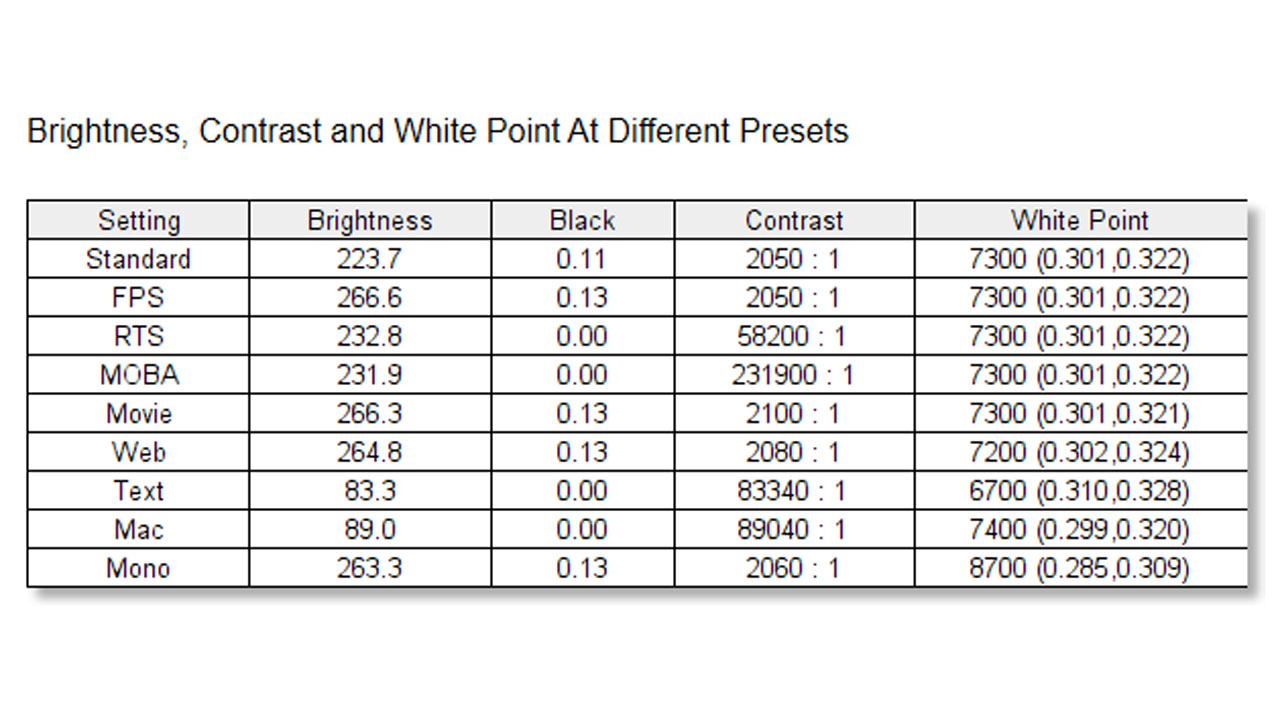
The Text profile is the closes to our target (6500K) but it doesn’t support a brightness level of more than 23%. We went with Standard profile for the calibration instead. More on this later.
Color Gamut
The Color Gamut test evaluates the color space coverage of the display panel from industry standards including sRGB, AdobeRGB and DCI-P3. Higher percentage is better.
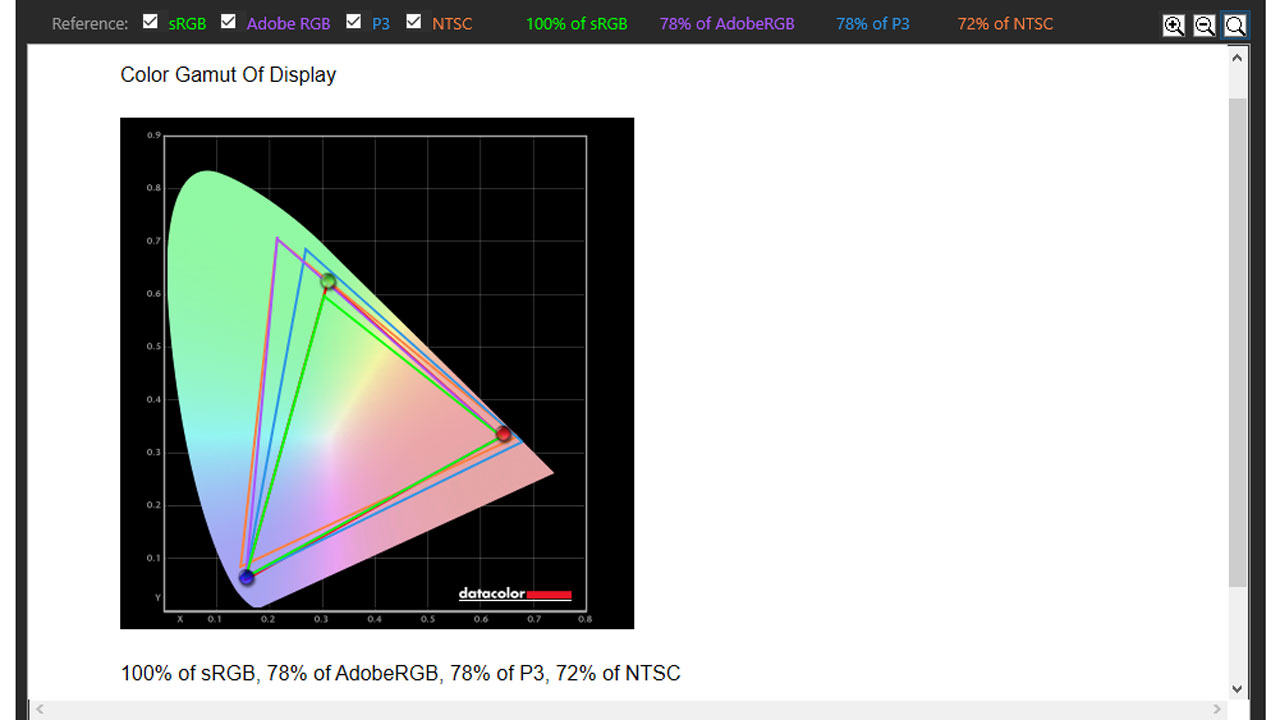
Color coverage is pretty decent for what it is. We have 100% coverage for sRGB, 78% for AdobeRGB and another 78% for DCI-P3. This is no professional monitor and it shows.
Tone Response
Tone response is where we check the display panel’s gamma and presets if there are any. We then compare the results with the industry standard gamma levels. Closer to the standard value is better.
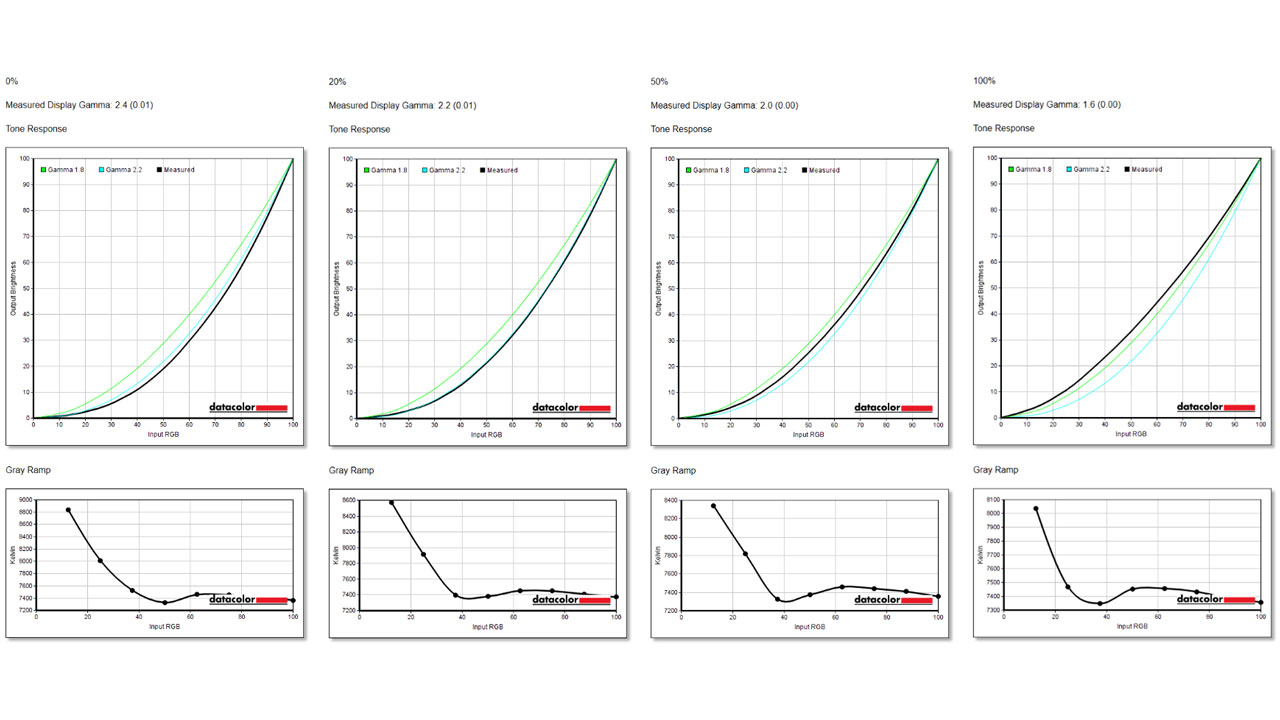
No presets here hence we played with the Black Stabilization instead. We’ve found out that gamma 2.2 is that setting at 20%. Pretty good alternative we got here though even without proper gamma presets.
Brightness and Contrast
The test here will shows us an overview on how the display performs at various brightness and contrast levels. Brightness is measured in nits or candela per square meter (cd/m2) while contrast is measured in luminance ratio. Higher is better.
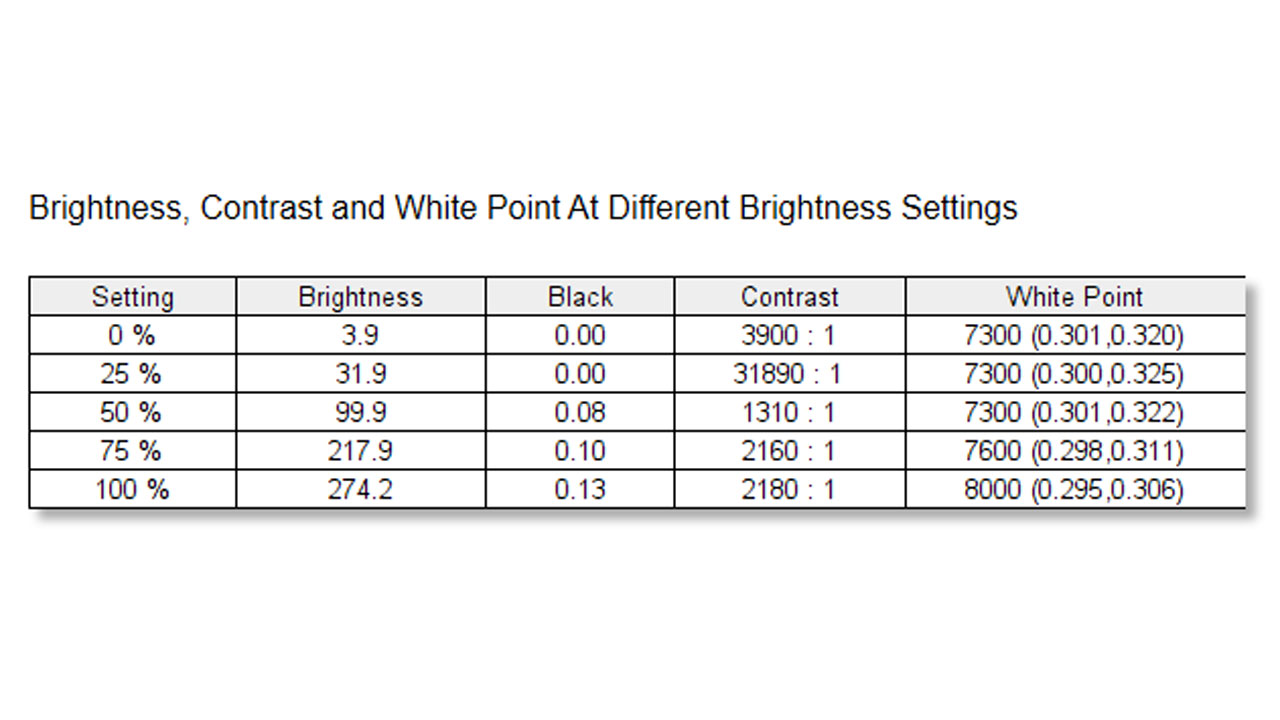
Peak brightness is rated at 274.2 cd/m2 which is a few candelas shy from the maximum brightness based on the specifications. As for contrast, we got a 2180:1 contrast ratio at 100% (for both settings).
Screen Uniformity
This test shows us an overview of the display panel’s color and luminance uniformity. The closer this value to 0, the better.
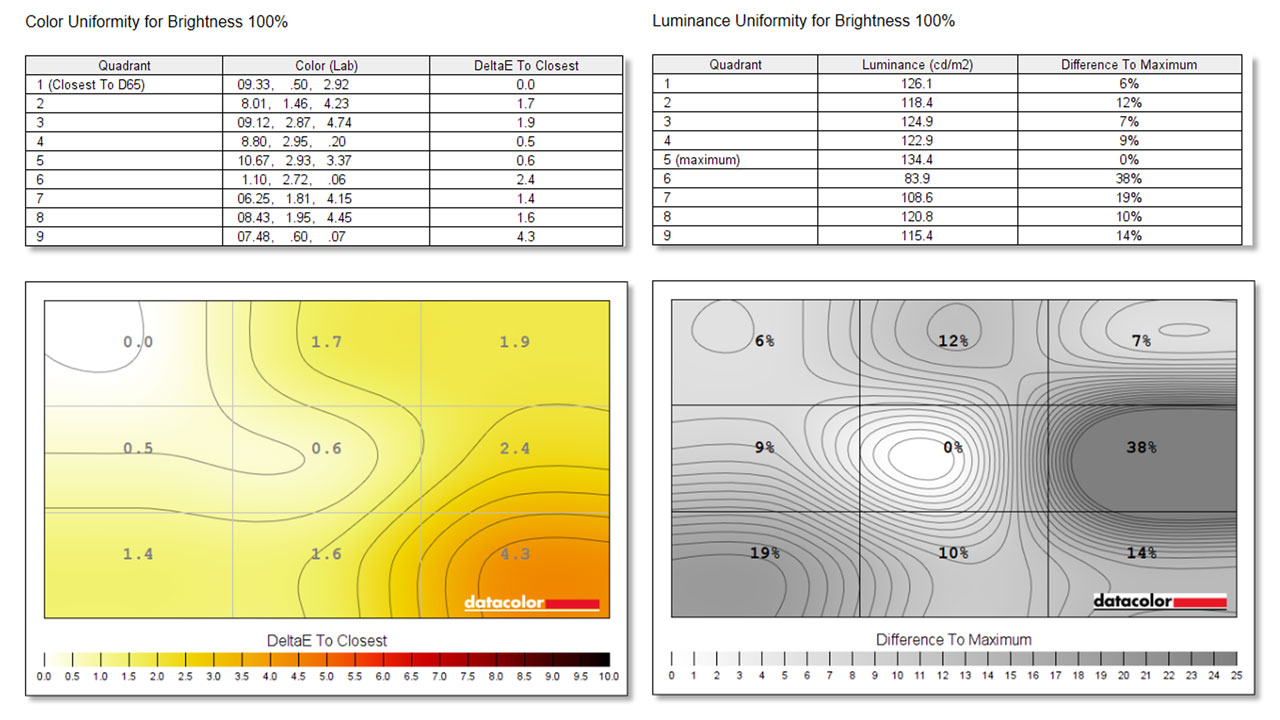
Color uniformity is pretty good. Luminance on the other hand is also good – for the most part. There’s this 38% difference in luminance at the 6th quadrant which is not really that bad since it’s a small spot in the middle of that area. I could actually get better results here by adjusting the measurement tool so I think this is an issue with seal on this particular curved panel. If it’s really a defect, I would notice it.
Color Accuracy
The color accuracy test shows how different basic color hues are reproduced by the display panel. These color tones corresponds with the Datacolor SpyderCheckr. Lower Delta-E values are better.
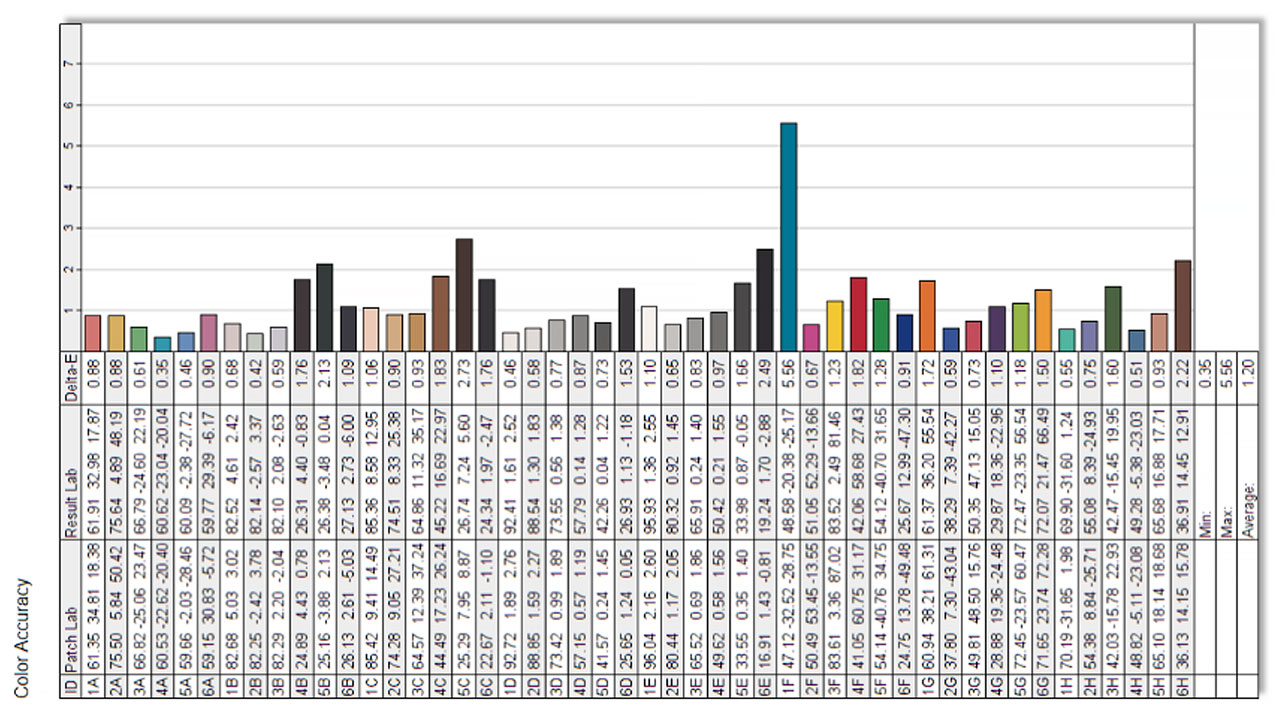
Color accuracy is pretty good with the exception of that one shade of cyan. If you’re a budding digital creator who loves Vocaloid, this is a bit of a pain to chew. Ironically, ViewSonic had a collaboration with Hatsune Miku earlier this 2021.
Calibration
Target for calibration is a 2.2 Gamma value, with a White Point at 6500K and a Brightness value set at 120 cd/m2. Calibrated values are then analyzed with the Spyder5ELITE Display Analysis tool. The following OSD values are selected for the display calibration.
| OSD Settings | |
|---|---|
| Brightness | 42 |
| Contrast | N/A (Default is 70%) |
| Saturation | N/A |
| Temperature | sRGB (only works with Black Stabilization at 50%) |
| Gamma | N/A (20% Black Stabilization is 2.2) |
| Preset | Standard |
It’s easy to calibrate the VX3219-PC-MHD since ViewSonic added an sRGB profile to do most of the work for you. It’s not perfect though, reading at about 7200K with a gamma level of 2.0 out of the box so we have to set it up properly with the calibration device still.
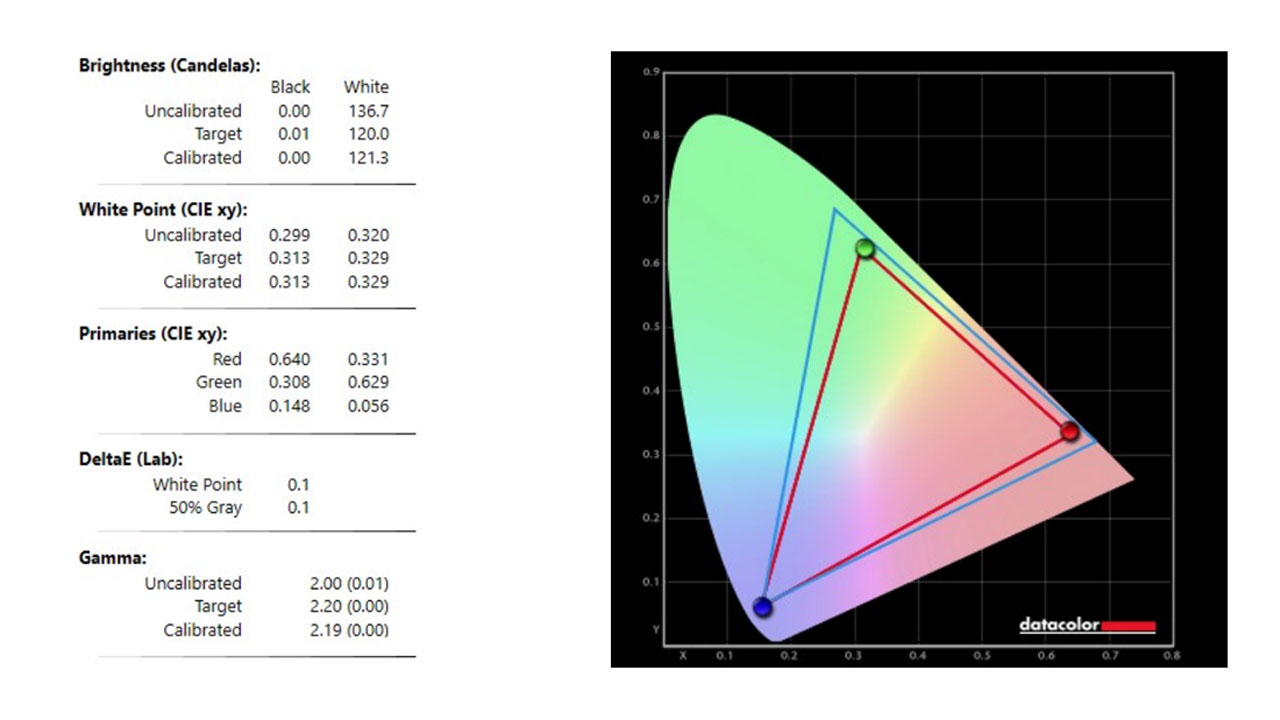
Note: If you wish to use the calibrated ICC profile taken from our Spyder5ELITE result, just send us a message. You may also read our guide on how to use ICC profiles.
Display/Input Lag
Time Sleuth is the standalone video signal input lag testing device we use for display panel reviews. It works by sending a video output to the display panel via HDMI. A photodiode then converts the displayed signal, allowing us to measure both the input lag and response time of the display.
| Position | Top | Middle | Bottom |
| Latency, ms | 15.63 | 17.36 | 19.13 |
Average lag is about 17.37ms – all results combined. This is not bad.
Motion Clarity/Blur
Setting up a pursuit camera allows us to a great extent, perceive the actual motion clarity of the display. Using such method also allows us to check out motion artifacts including ghosting, inverse ghosting and motion blur. This pursuit camera test is a peer-reviewed invention.
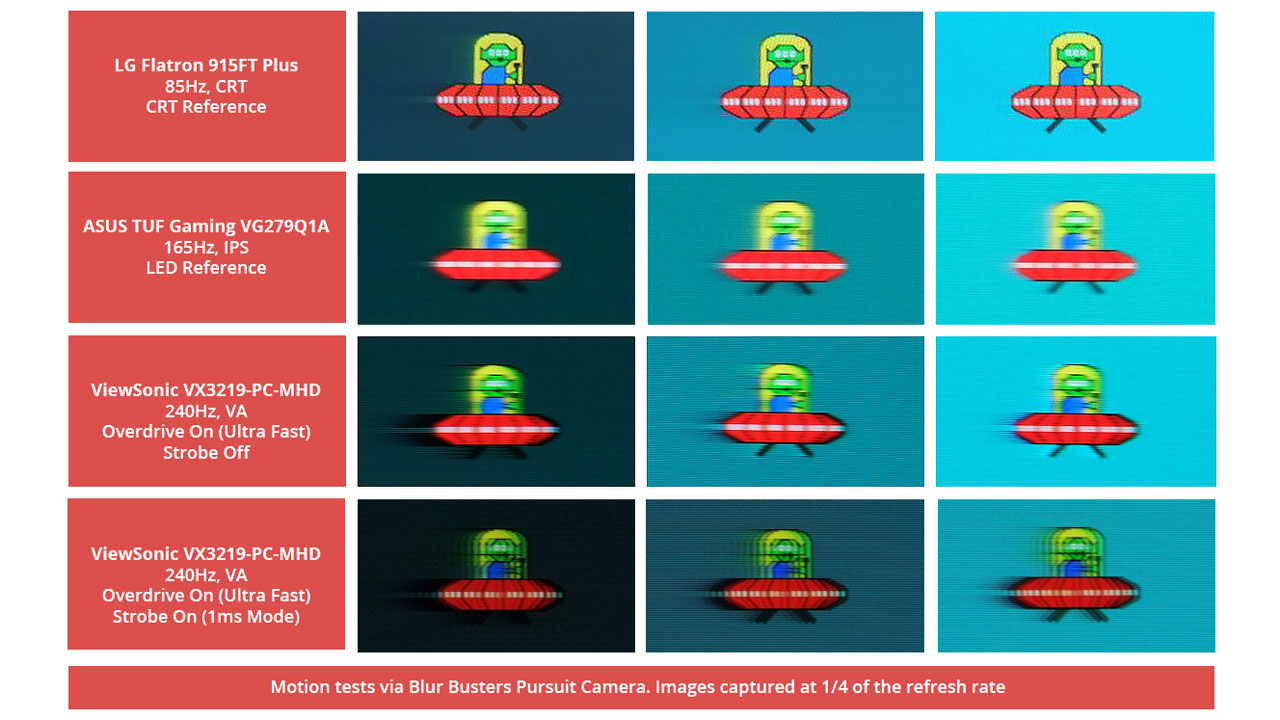
Motion clarity is excellent for a VA panel but certainly not as good as IPS nor TN based panels at this area. Streaking and ghosting are present and even more annoying with 1ms Mode enabled. Such is the nature of VA panels but this one takes the cake as the best in class.
Power Consumption
The power consumption at varying brightness and contrast levels is checked with a wattmeter. The lower the power consumption, the better.
| Brightness Level | 0% | 25% | 50% | 75% | 100% | 120cd/m2 |
| Power, W | 15.08 | 20.7 | 25.18 | 30.63 | 36.36 | 23.52 |
Power consumption is typical with its size and maximum brightness level. We actually got decent results here when it is calibrated.
Software, Lighting and Special Features
The VX3219-PC-MHD is a 32″ gaming display with a 1500R curvature, a 240Hz refresh rate and adaptive-sync – that’s about most of its features.
Now while it doesn’t come with RGB lighting effects, it comes with a 2W stereo speaker. It kinda sucks though not gonna lie. As a comparison, the ViewSonic XG2705-2K‘s onboard stereo solution is miles better in this area – in SPL, frequency response and dynamics. Even my phone sounds better.
Final Thoughts
The VierwSonic VX3219-PC-MHD performed mostly great on our tests. It’s certainly the fastest VA panel tested – refresh rate considered. That said, the bump in refresh rate slightly alleviated the usual smears when in motion. The 1ms mode is practically useless though – as with most VA panels with this feature turned on. You’re better off with overdrive at the highest along with adaptive-sync. The speaker implementation also felt like it’s just an after thought. Just to say that it comes with one – or two, technically speaking.
Now with that out of the way, the VX3219 is actually one of the better performing VA panels out there. Color accuracy for the most part is great and while it doesn’t have pro-level range, it’s a perfectly fine panel for the sRGB color space.
In closing, do I recommend the VX3219-PC-MHD? My short answer is yes – if you are looking for a 240Hz refresh rate 32″ curved full HD panel with a price under $400 USD.

ViewSonic VX3219-PC-MHD 32” 240Hz
-
Performance - 9/10
9/10
-
Build Quality - 8/10
8/10
-
Connectivity - 8/10
8/10
-
Ergonomics - 7/10
7/10
-
Features - 8/10
8/10
Summary
The ViewSonic VX3219-PC-MHD is a new to me 240Hz 32-inch curved gaming display. Certainly a refreshing and viable option over the majority of the 32″ curved VA panels saturating the market.
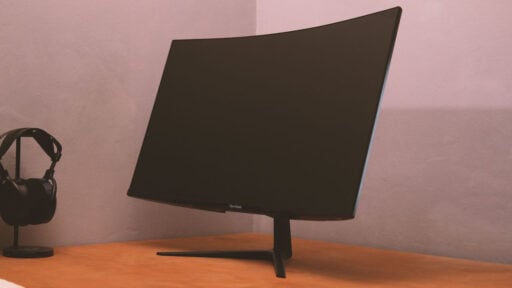


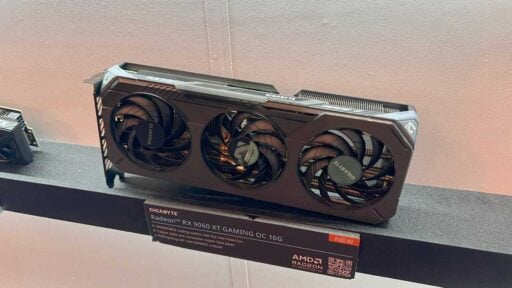
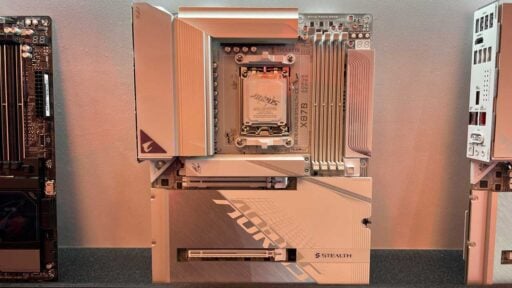
Thanks… I found this in-depth review really helpful.
Im currently using a 165hz 32″ curved monitor but I’m upgrading to a new tower with ddr5 specs and this seems a nice cheap monitor upgrade to go alongside it.. thanx again.